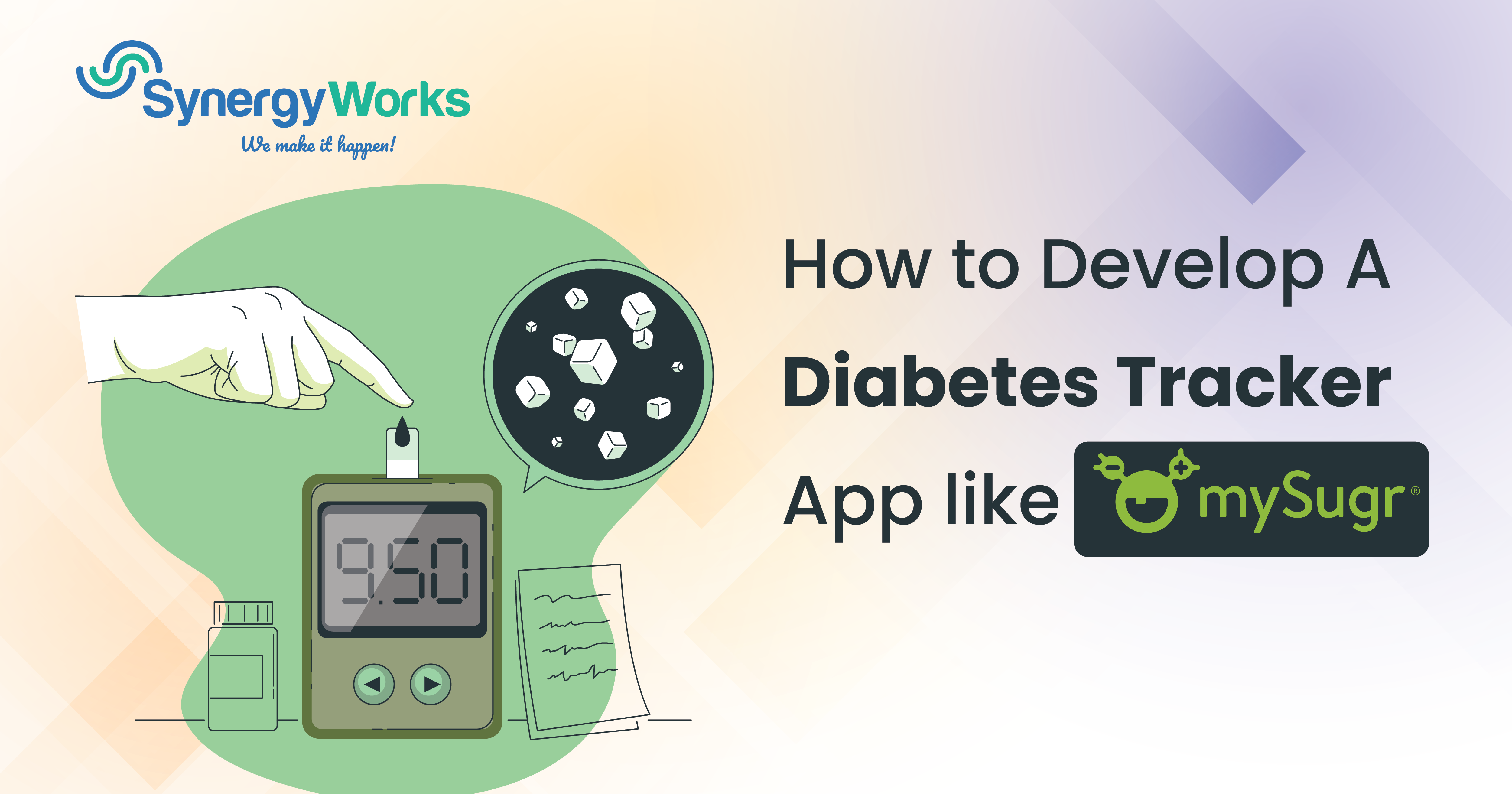Glucose, the body’s prime energy source, is a delicate balancing act. Too much or too little can result in drastic health consequences. This balancing act is a daily reality for over 422 million people worldwide battling diabetes.
A diabetes tracker app, like mySugr, can be a game-changer. It simplifies tasks like monitoring blood glucose levels, controlling nutrition, and scheduling medical exams. Notably, mySugr has amassed over 4 million registered users, becoming a beacon in diabetes management.
If the prospect of developing a diabetes tracker app akin to mySugr piques your interest, continue reading, as this article will delve into the steps required to bring your vision to fruition.
What Is mySugr?
Founded in 2012 in Vienna, mySugr is a diabetes management app that simplifies the daily routine of living with diabetes. It serves as a digital logbook, enabling patients to record blood glucose data, meals, exercise, medication, and more, effectively tracking their health status.
The unique selling proposition of mySugr lies in its gamification approach. It offers a “monster companion” that patients name and aim to “tame” daily through diligent logging of data, physical activity, and maintaining optimal glucose levels. This dynamic feature adds an element of engagement and motivation to the otherwise strenuous diabetes management process.
The app operates on a Business-to-Consumer (B2C) model, offering both a freemium, ad-supported version and mySugr Pro subscription plans. They also extend services to healthcare insurers, thus broadening their revenue streams. The app’s comprehensive features and innovative approach have made it an essential tool for diabetes management worldwide.
Essential Features of a Diabetes Tracker App
The success of an app is significantly determined by its feature set. A well-designed, intuitive application can improve user experience and, ultimately, patient health. Here are some must-have features for a diabetes tracker app:
- Personalized Logging Screen: This feature allows users to log their daily activities, food intake, insulin levels, and other diabetes-related data conveniently.
- Linking Blood Glucose Meter: Integrating a user’s blood glucose meter with the app can facilitate real-time tracking and data logging.
- Blood Glucose Chart: Visual representation of blood glucose levels over time can help users identify patterns and manage their condition better
- AI-Driven Insights: Leveraging AI can provide personalized insights and recommendations based on the user’s logged data.
- Live Consultations: Incorporating a feature for live consultations with healthcare professionals can offer immediate advice and support.
- Estimated HbA1c: The app can estimate HbA1c levels based on the user’s blood glucose readings, providing a more comprehensive view of their diabetes management.
- Reports: Regular reports summarizing users’ health data can help them and their healthcare providers make informed decisions.
- Challenges: Encouraging users to achieve health goals through challenges can boost their motivation and adherence to their care plan.
- Reminder System for Medication: Reminders can help users to maintain their medication schedule, which is vital for effective diabetes management.
- Find Prescribed Meds Online: This feature can guide users to trusted online pharmacies where they can purchase their prescribed medications.
The exact feature set will depend on the scope and purpose of your app.
Whether you aim to develop a comprehensive all-in-one diabetes management app or prefer a simpler, targeted app like a diabetes insulin calculator, the key is to focus on the specific needs of your target user base. Remember, the ultimate goal is to create a tool that provides practical and personalized support for people managing diabetes.
Developing a Diabetes Tracker App Like mySugr: A Step-by-Step Guide
Entering the fray of healthcare app development requires meticulous planning and execution. Let’s map out the steps to build a diabetes tracker app like mySugr.
Step 1: Shape your Diabetes App Idea and Conduct Market Research

Your initial step involves refining your app idea and conducting rigorous market research. Understanding the needs and desires of your potential users is paramount. Investigate other diabetes management apps on the market, identify gaps in service, and determine how your app can provide unique value.
Step 2: Decide on Platform and Technologies

Next, decide on the platform(s) for your app, such as iOS, Android, or both. Your choice will largely depend on your target market’s preferences. Also, consider the technologies that will power your app. Leveraging AI for personalized recommendations or integrating IoT devices for real-time glucose level tracking can significantly enhance the user experience.
Step 3: Choose a Monetization Model

Your app’s monetization strategy should align with your business objectives and user preferences. Here are three models to consider:
Subscription: Users pay a recurring fee for access to premium features or content.
In-app Ads: Displaying advertisements within the app provides revenue but could disrupt the user experience.
Paid Downloads: Charging users a one-time fee to download the app can generate upfront revenue but may deter potential users.
Step 4: App Development and MVP

Choosing the right development team, such as SynergyWorks, is crucial at this stage. Their expertise can help you build a minimum viable product (MVP) — a version of your app with only the essential features. An MVP helps validate your idea, garner early user feedback, and can be developed at a fraction of the cost of a full-featured app.
Step 5: Launch and Gather Feedback

Once your app is ready, it’s time to launch. However, your work isn’t over. Gathering user feedback is vital for understanding how well your app meets user needs and identifying areas for improvement. Regular updates based on this feedback will help keep your app relevant and valuable to your users.
Need Help Developing a Diabetes Tracker App Like mySugr? We Can Help!
To recap, building a diabetes tracker app akin to mySugr involves crystallizing your app idea, conducting market research, deciding on platforms and technologies, choosing a monetization model, developing an MVP, and finally, launching and gathering feedback.
If you’re interested in entering the healthcare app market with an app like mySugr, SynergyWorks is here to help. From refining your idea, through development, to the launch phase and beyond, our team is committed to delivering a product that resonates with users and meets your business objectives.
Get in touch with us today for a custom quote on your diabetes tracker app.
About Author
Shikha Taman
Shikha Taman is the founder & CEO of SynergyWorks Solutions. With over 12 years of experience in the industry. She has extensive knowledge of software engineering, project management, client management, and business strategy. She strives to ensure all the products developed are always up-to-date with materializing technologies to remain competitive in today’s marketplace.




